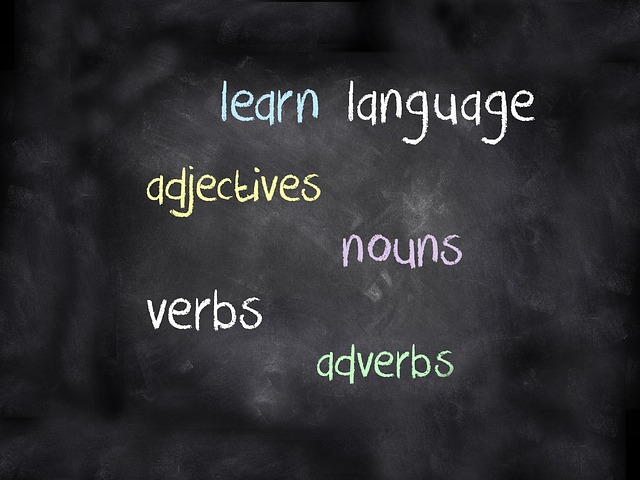Learning German affordably: where to start?
Starting your German language journey doesn't require breaking the bank, but it does demand strategic planning and realistic expectations about what different price points can offer. With numerous learning methods available today, from free mobile applications to structured online courses and traditional classroom instruction, understanding the cost spectrum and effectiveness of each approach helps you make informed decisions that align with both your budget and learning goals.

Why is it important to learn German?
German holds significant value as the most widely spoken native language in Europe, with over 100 million speakers across Germany, Austria, Switzerland, and other regions. Beyond personal enrichment, German language skills open doors to career opportunities in Europe’s largest economy, particularly in engineering, automotive, technology, and renewable energy sectors. Many German companies maintain strong international presence, making German proficiency valuable for professionals seeking advancement in multinational environments. Additionally, Germany offers numerous educational opportunities, including tuition-free university programs for international students, making German language skills a practical investment in academic pursuits.
Which teaching methods are the most effective?
Language learning effectiveness varies based on individual preferences, but research consistently supports certain approaches. Immersive methods that combine multiple skill areas—listening, speaking, reading, and writing—tend to produce better results than single-focus techniques. Interactive conversation practice, whether through language exchange partnerships or structured speaking sessions, accelerates fluency development. Spaced repetition systems help consolidate vocabulary retention, while contextual learning through authentic materials like news articles, podcasts, and videos builds practical comprehension skills. Grammar-focused instruction works well when balanced with communicative practice, rather than as standalone study. Many successful learners combine multiple methods, adapting their approach as they progress through different proficiency levels.
How to choose the right online German course?
Selecting an appropriate online German course requires evaluating several key factors beyond price considerations. Course structure should align with recognized proficiency frameworks like the Common European Framework of Reference (CEFR), providing clear progression from A1 beginner through C2 advanced levels. Interactive elements such as live instruction, speaking practice opportunities, and personalized feedback distinguish quality programs from basic self-study materials. Technical features matter too—mobile accessibility, offline content availability, and progress tracking enhance learning flexibility. Instructor qualifications and native speaker involvement indicate program credibility. Free trial periods or money-back guarantees allow you to assess compatibility before committing financially. Reading verified student reviews provides insights into real-world experiences and outcomes.
What does a structured learning path entail?
A structured learning path provides systematic progression through German language skills, typically organized around CEFR proficiency levels. Beginning stages focus on essential vocabulary, basic grammar patterns, and fundamental communication skills for everyday situations like introductions, shopping, and directions. Intermediate levels expand into complex sentence structures, past and future tenses, and topic-specific vocabulary for work, travel, and social interactions. Advanced stages emphasize nuanced grammar, idiomatic expressions, and specialized terminology for academic or professional contexts. Effective structured paths integrate regular assessments, review cycles, and practical application exercises. Many programs include cultural components that provide context for language use, helping learners understand when and how to apply different expressions appropriately in German-speaking environments.
What are the costs of online German language courses?
Online German course pricing varies significantly based on features, instruction quality, and program duration. Free options like Duolingo and Deutsche Welle’s online resources provide basic vocabulary and grammar instruction but limited speaking practice. Subscription-based platforms typically range from €10-30 monthly, offering more comprehensive content and interactive features. Premium courses with live instruction, personal tutoring, or university-level curricula may cost €100-500 for complete programs. One-on-one online tutoring ranges from €15-50 per hour depending on instructor qualifications and lesson customization.
| Course Type | Provider Example | Monthly Cost | Key Features |
|---|---|---|---|
| Free Basic | Deutsche Welle | €0 | Self-paced lessons, basic grammar |
| App-Based Premium | Babbel | €13-20 | Interactive exercises, speech recognition |
| Comprehensive Online | Lingoda | €80-200 | Live classes, certified instructors |
| Private Tutoring | iTalki/Preply | €60-200 | Personalized lessons, flexible scheduling |
Prices, rates, or cost estimates mentioned in this article are based on the latest available information but may change over time. Independent research is advised before making financial decisions.
Learning German affordably requires balancing cost considerations with educational quality and personal learning preferences. While free resources provide excellent starting points, investing in structured programs or tutoring often accelerates progress and provides accountability. Consider your timeline, proficiency goals, and available study time when selecting among available options, remembering that consistent practice with any quality resource typically yields better results than sporadic use of premium programs.




